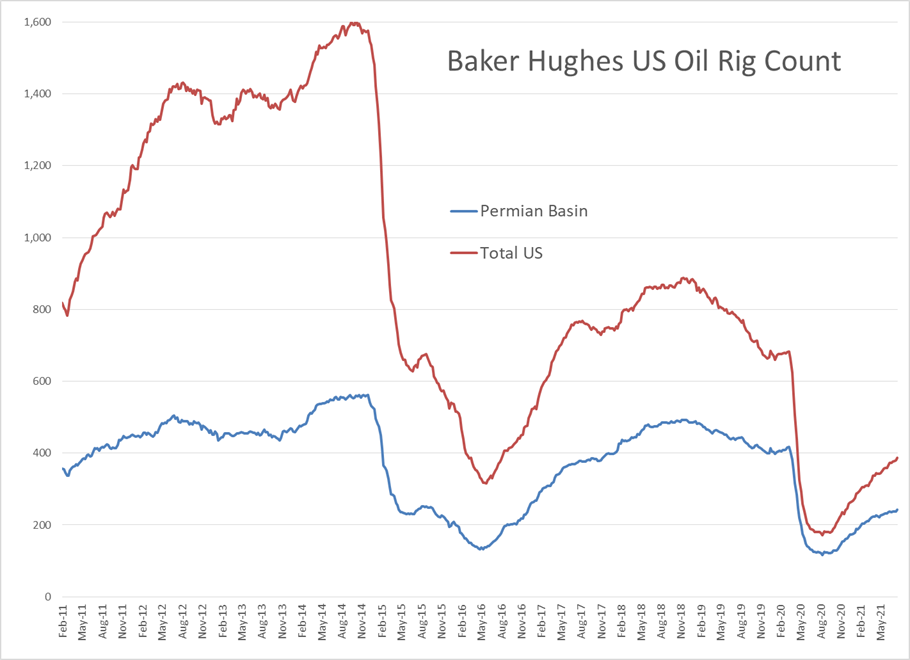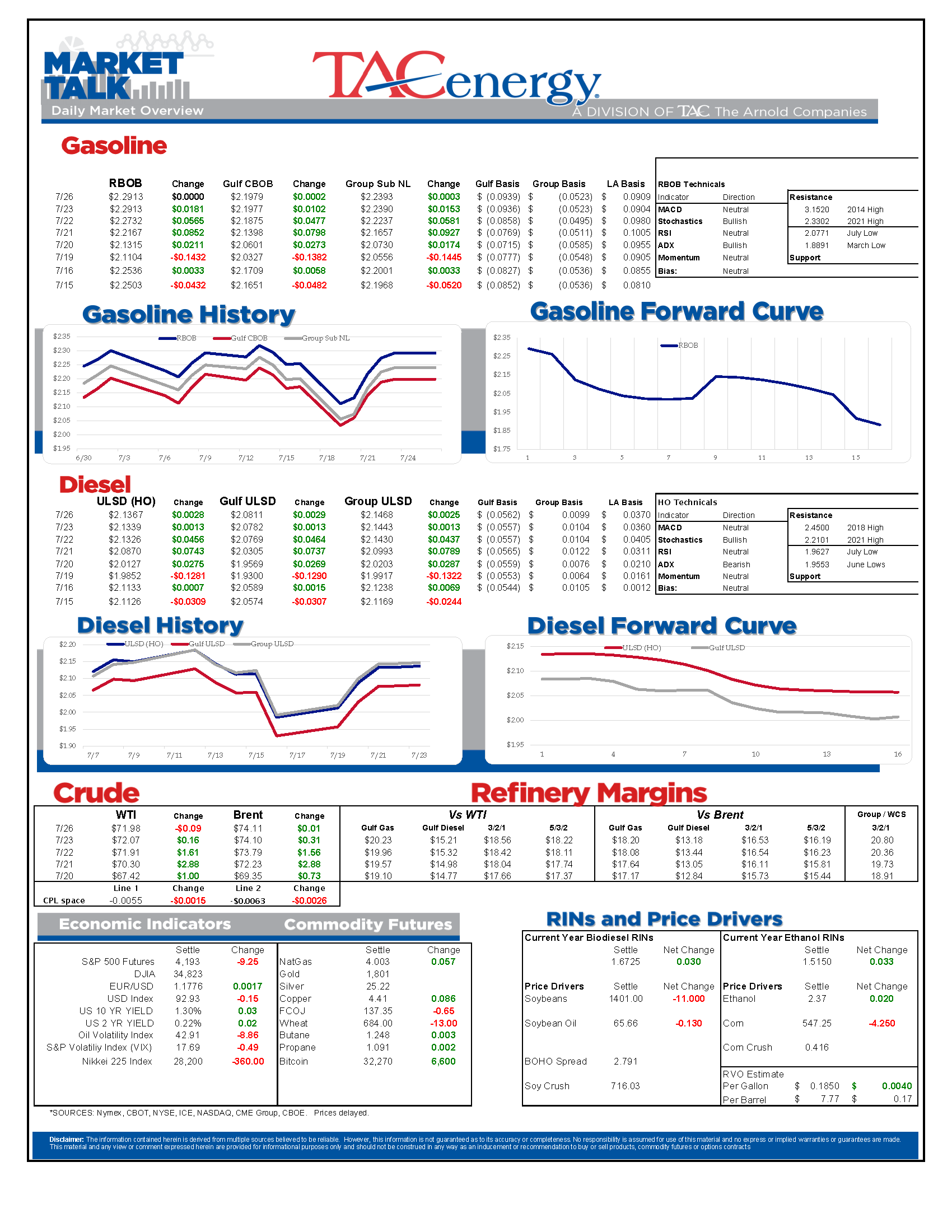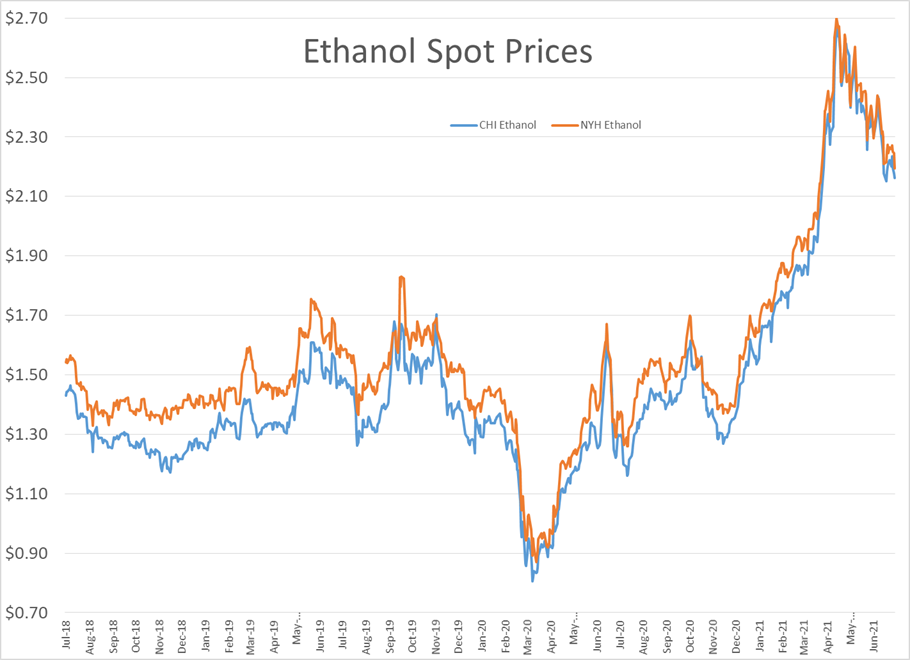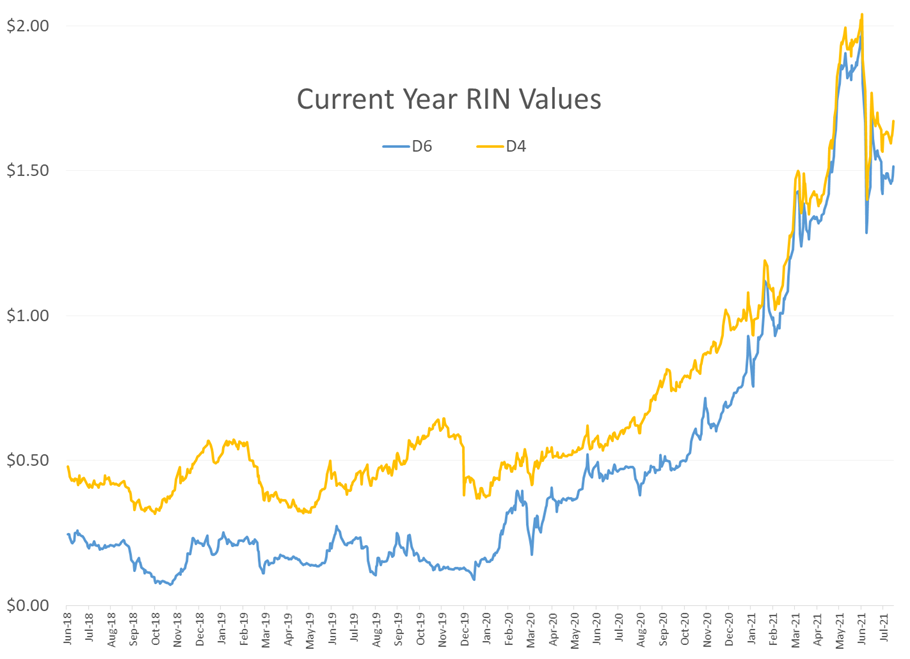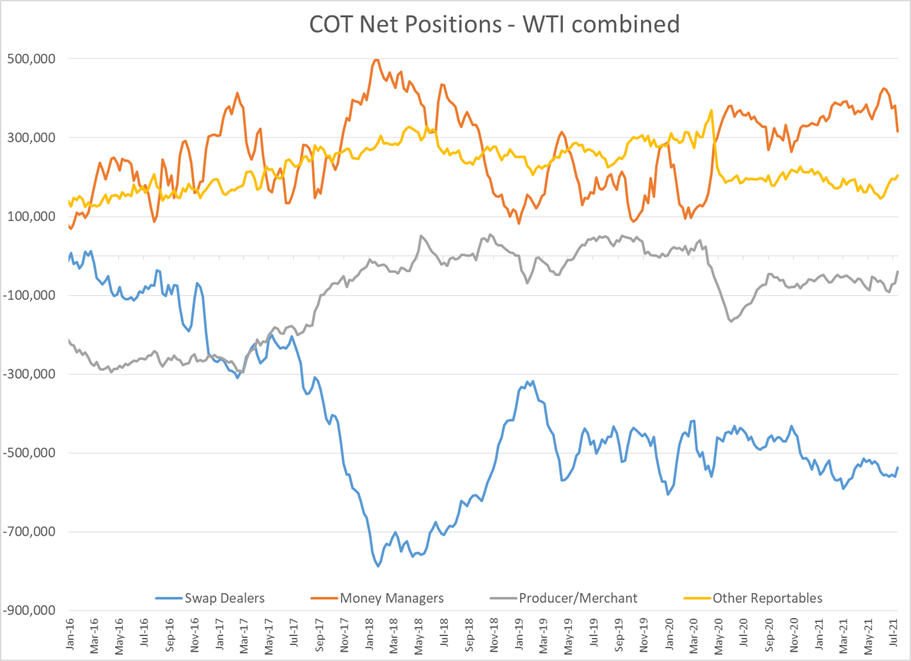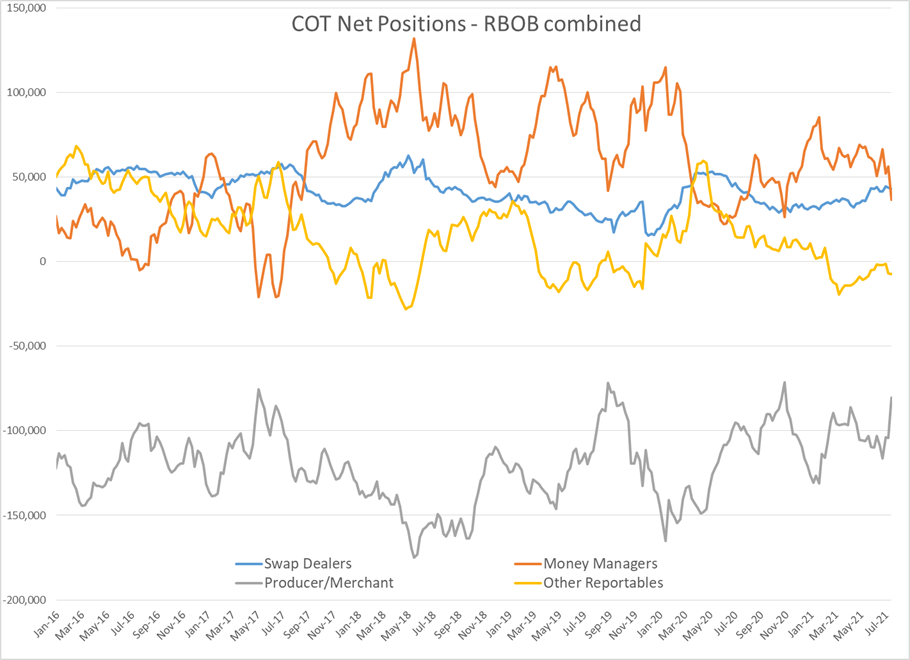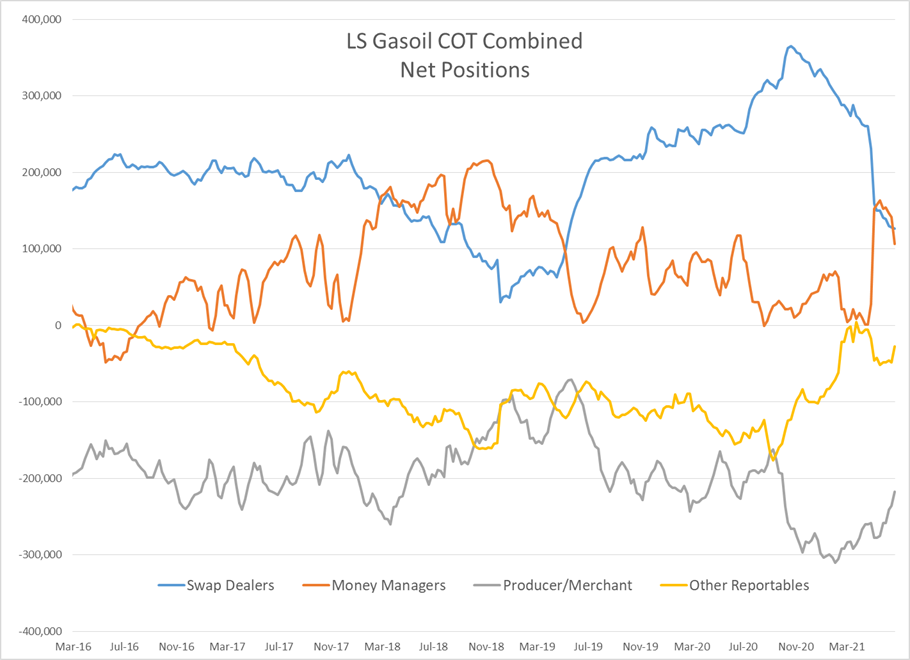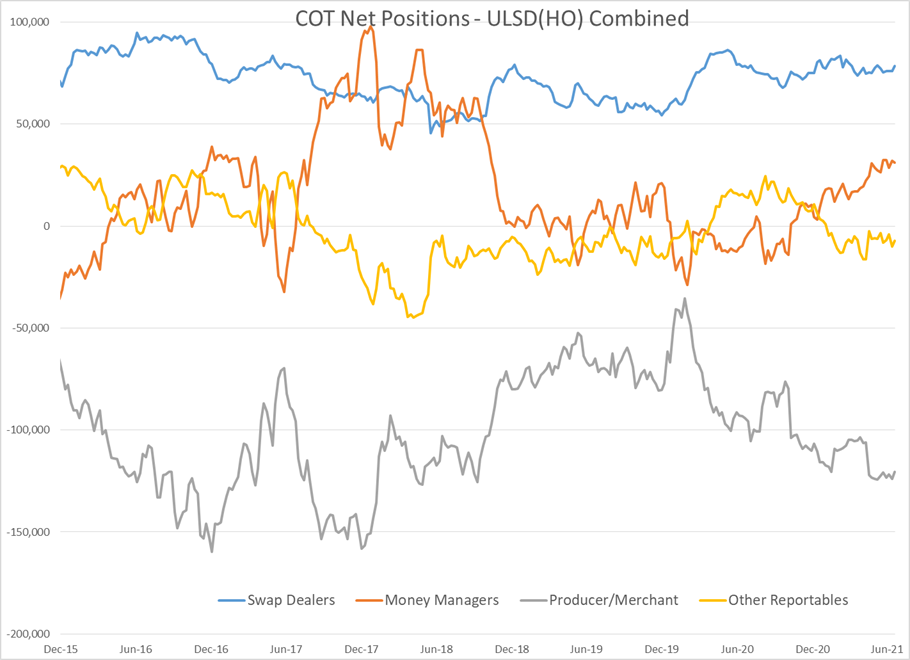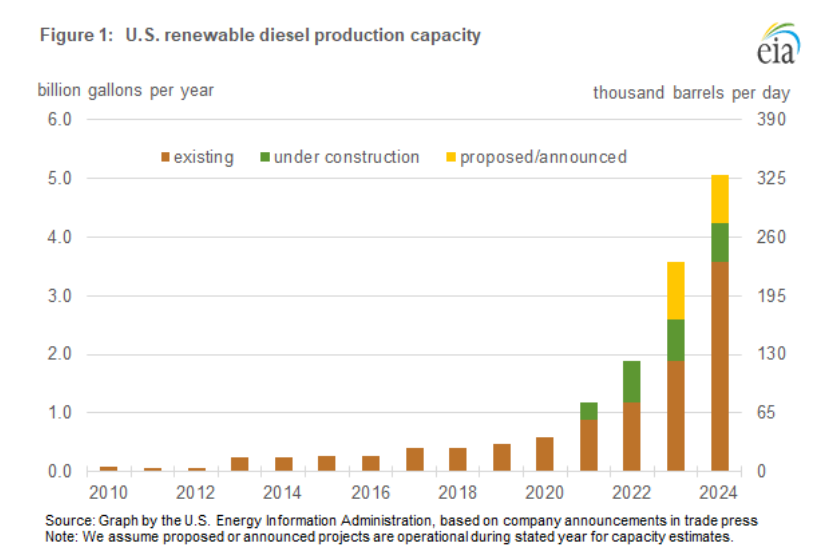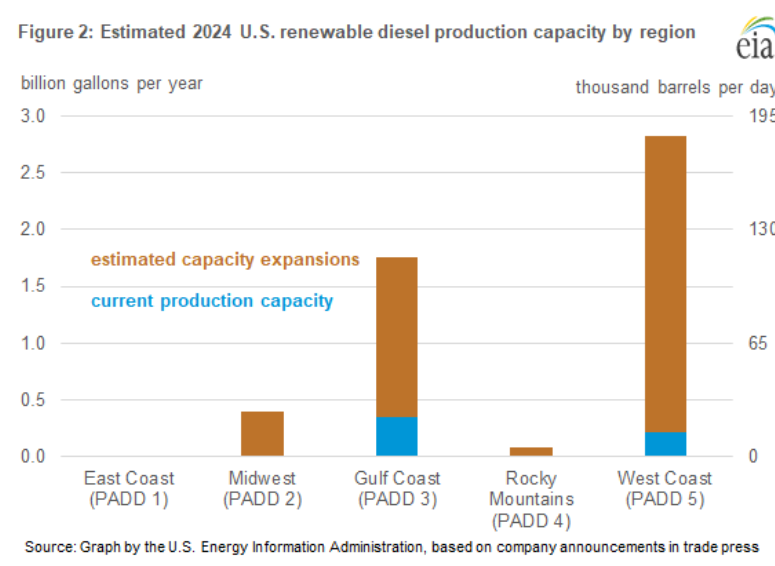Energy Futures Tread Water To Start Last Week Of July

Energy futures are treading water to start the last week of July, and US equity markets are seeing small losses after reaching fresh record highs Friday.
Although volatility has dropped in both energy and equity markets since spiking a week ago, things aren’t as calm as they seem based on current prices, as we did have refined products trading over nearly a nickel range overnight. The last week of July will bring a key test for the energy bulls, that have already passed two big tests so far in July. If prices do not break to fresh highs before month end, there will be an argument that the weekly charts are forming a rounding top pattern that could end up meaning sharply lower prices as we get closer to fall.
Ethanol prices appear to be on the verge of a technical breakdown, along with corn futures which traded below their 200 day moving average for the first time in nearly a year on Friday. That selling in grains didn’t prevent a jump of more than 3 cents in RIN values Friday, although some stronger offers did appear in the afternoon, which could create some downward pressure to start the week, especially with futures flashing red.
Hedge funds look like they may have thrown in the towel after last Monday’s brutal sell-off (and likely missing out on the subsequent rally) with managed money net length seeing sharp reductions across the energy board last week. WTI and RBOB net length plunged to the lowest levels since last October as long positions were cut, and new short positions were added. Those new shorts may help explain the strong rallies in WTI and RBOB Wednesday and Thursday if those new speculative shorts were getting squeezed out. Brent and Gasoil contracts also saw large declines in the large speculator books, while ULSD was the only contract to see a single digit percentage drop on the week, which could end up being a sign of hedge funds struggling to figure this market out as there’s a case that the ULSD contract looks the weakest currently on the charts.
The EIA last week took a closer look at the spike in renewable diesel production expected over the next 3 years, which is forecast to bring US capacity from less than 1 billion gallons/year currently, to nearly 5 billion gallons by 2024. The report notes that even with this surge in production, RD will only account for roughly 20% of West Coast diesel refining capacity, and 4% of USGC capacity after these upgrades are made. The report also highlights the challenges the consequences of higher feedstock and RIN prices caused by this race to take advantage of California’s credits go green.
Baker Hughes reported 7 more oil rigs were put to work last week, continuing the steady increase in drilling activity as producers enjoy the highest prices in nearly 7 years. Unlike the past month, the Permian led the increases this week, with 4 more rigs operating in the country’s largest basin.
Click here to download a PDF of today's TACenergy Market Talk.
News & Views
View All
Energy Futures Are Caught Up In Headline Tug-O-War This Morning
Energy futures are caught up in headline tug-o-war this morning with Canadian oil production concerns and a positive US GDP report trying to push prices higher while sinking Chinese demand worries and Gaza ceasefire hopes are applying downward pressure. The latter two seem to be favored more so far this morning with WTI and Brent crude oil futures down ~45 cents per barrel, while gasoline and diesel prices are down about half a cent and two cents, respectively.
No news is good news? Chicago gasoline prices dropped nearly 30 cents yesterday, despite there not being any update on Exxon’s Joliet refinery after further damage was discovered Wednesday. Its tough to say if traders have realized the supply situation isn’t as bad as originally thought or if this historically volatile market is just being itself (aka ‘Chicago being Chicago’).
The rain isn’t letting up along the Texas Gulf Coast today and is forecasted to carry on through the weekend. While much of the greater Houston area is under flood watch, only two refineries are within the (more serious) flood warning area: Marathon’s Galveston Bay and Valero’s Texas City refineries. However, notification that more work is needed at Phillip’s 66 Borger refinery (up in the panhandle) is the only filing we’ve seen come through the TECQ, so far.
Premiums over the tariff on Colonial’s Line 1 (aka linespace value) returned to zero yesterday, and actually traded in the negatives, after its extended run of positive values atypical of this time of year. Line 1’s counterpart, Line 2, which carries distillates from Houston to Greensboro NC, has traded at a discount so far this year, due to the healthy, if not over-, supply of diesel along the eastern seaboard.
Click here to download a PDF of today's TACenergy Market Talk.

WTI And Brent Crude Oil Futures Are Trading ~$1.50 Per Barrel Lower In Pre-Market Trading
The across-the-board drawdown in national energy stockpiles, as reported by the Department of Energy yesterday, stoked bullish sentiment Wednesday and prompt month gasoline, diesel, and crude oil futures published gains on the day. Those gains are being given back this morning.
The surprise rate cut by the People’s Bank of China is being blamed for the selling we are seeing in energy markets this morning. While the interest rate drop in both short- and medium-term loans won’t likely affect energy prices outright, the concern lies in the overall economic health of the world’s second largest economy and crude oil consumer. Prompt month WTI and Brent crude oil futures are trading ~$1.50 per barrel lower in pre-market trading, gasoline and diesel are following suit, shaving off .0400-.0450 per gallon.
Chicagoland RBOB has maintained its 60-cent premium over New York prices through this morning and shows no sign of coming down any time soon. Quite the opposite in fact: the storm damage, which knocked Exxon Mobil’s Joliet refinery offline on 7/15, seems to be more extensive than initially thought, potentially extending the repair time and pushing back the expected return date.
There are three main refineries that feed the Chicago market, the impact from one of them shutting down abruptly can be seen in the charts derived from aforementioned data published by the DOE. Refinery throughput in PADD 2 dropped 183,000 barrels per day, driving gasoline stockpiles in the area down to a new 5-year seasonal low.
While it seems all is quiet on the Atlantic front (for now), America’s Refineryland is forecasted to receive non-stop rain and thunderstorms for the next four days. While it may not be as dramatic as a hurricane, flooding and power outages can shut down refineries, and cities for that matter, all the same, as we learned from Beryl.

